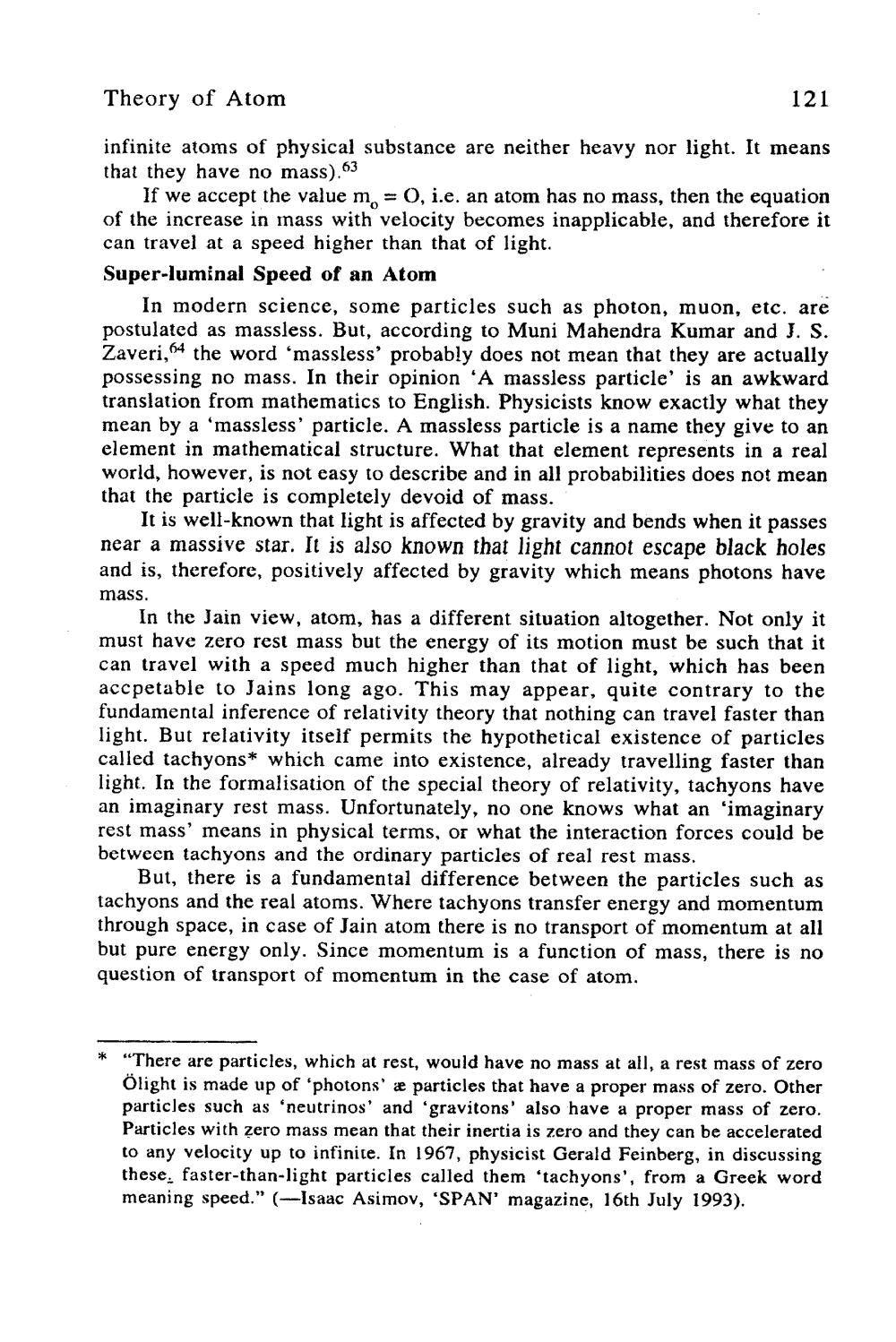________________
Theory of Atom
infinite atoms of physical substance are neither heavy nor light. It means that they have no mass).63
121
If we accept the value m = O, i.e. an atom has no mass, then the equation of the increase in mass with velocity becomes inapplicable, and therefore it can travel at a speed higher than that of light.
Super-luminal Speed of an Atom
In modern science, some particles such as photon, muon, etc. are postulated as massless. But, according to Muni Mahendra Kumar and J. S. Zaveri,64 the word 'massless' probably does not mean that they are actually possessing no mass. In their opinion 'A massless particle' is an awkward translation from mathematics to English. Physicists know exactly what they mean by a 'massless' particle. A massless particle is a name they give to an element in mathematical structure. What that element represents in a real world, however, is not easy to describe and in all probabilities does not mean that the particle is completely devoid of mass.
It is well-known that light is affected by gravity and bends when it passes near a massive star. It is also known that light cannot escape black holes and is, therefore, positively affected by gravity which means photons have
mass.
In the Jain view, atom, has a different situation altogether. Not only it must have zero rest mass but the energy of its motion must be such that it can travel with a speed much higher than that of light, which has been accpetable to Jains long ago. This may appear, quite contrary to the fundamental inference of relativity theory that nothing can travel faster than light. But relativity itself permits the hypothetical existence of particles called tachyons* which came into existence, already travelling faster than light. In the formalisation of the special theory of relativity, tachyons have an imaginary rest mass. Unfortunately, no one knows what an 'imaginary rest mass' means in physical terms, or what the interaction forces could be between tachyons and the ordinary particles of real rest mass.
But, there is a fundamental difference between the particles such as tachyons and the real atoms. Where tachyons transfer energy and momentum through space, in case of Jain atom there is no transport of momentum at all but pure energy only. Since momentum is a function of mass, there is no question of transport of momentum in the case of atom.
* "There are particles, which at rest, would have no mass at all, a rest mass of zero Ölight is made up of 'photons' a particles that have a proper mass of zero. Other particles such as 'neutrinos' and 'gravitons' also have a proper mass of zero. Particles with zero mass mean that their inertia is zero and they can be accelerated to any velocity up to infinite. In 1967, physicist Gerald Feinberg, in discussing these, faster-than-light particles called them 'tachyons', from a Greek word meaning speed." (-Isaac Asimov, 'SPAN' magazine, 16th July 1993).




